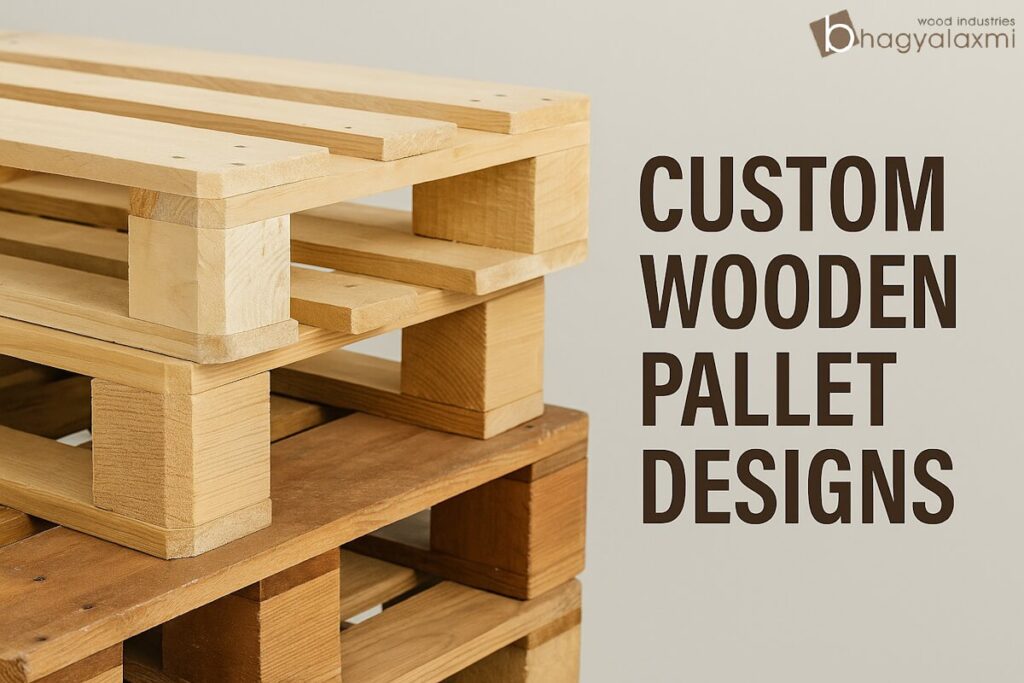
When you think about wooden pallets, your mind probably goes to those plain, rectangular platforms stacked in warehouses or sitting on loading docks. They look pretty standard, right? But here’s the thing—there’s more to them than meets the eye. Wooden pallet designs can be customized in ways that fit the exact needs of your product, and that can make a big difference in protection, handling, and even shipping costs.
A one-size-fits-all pallet doesn’t always cut it. If your products have unique shapes, weights, or handling requirements, you might be throwing money away by using generic pallets. Custom wooden pallet designs solve that problem by matching the pallet to your product—not the other way around.
Why Custom Wooden Pallet Designs Matter
Think of pallets as part of your product’s packaging and shipping strategy. They’re not just wooden frames for stacking boxes; they’re the foundation that supports your goods through handling, transport, and storage. A poorly matched pallet can lead to damaged items, safety hazards, or higher costs.
Here are a few situations where custom designs come into play:
- Odd-shaped products: Machinery parts, industrial components, or irregular retail displays need support in specific areas.
- Heavy loads: Standard pallets might not handle extreme weight without bending or breaking.
- Fragile goods: Glass, electronics, or ceramics need extra bracing or a snug fit to prevent movement.
- Special handling: If forklifts or pallet jacks can’t reach certain parts of the load easily, a custom entry design can fix that.
When the pallet design matches your product exactly, you’re reducing waste, preventing damage, and improving the whole supply chain flow.
Want pallets that fit your products? Talk to our team and see how custom designs can save you space, time, and money.
Different Types of Wooden Pallets
Before getting into the “custom” part, it’s worth understanding the common types of wooden pallets. This gives you a baseline to work from.
- Stringer Pallets
These are the most common. They use three or more parallel pieces of timber (stringers) to support the deck boards. They’re strong and simple, and you can modify them for custom sizes. - Block Pallets
Built with both parallel and perpendicular supports, block pallets are easier to lift from any side. They’re often sturdier than stringers and better for heavy-duty applications. - Two-way Pallets
Only accessible from two opposite sides, these are fine for straightforward handling but less flexible. - Four-way Pallets
Allow forklift entry from all four sides, which can speed up warehouse operations. - Single-face Pallets
These have deck boards only on one side. They’re lightweight and used for specific shipping needs. - Double-face Pallets
Deck boards on both sides make them stronger and more stable for stacking.
Knowing these basic designs helps in understanding what can be tweaked for a custom fit.
What Goes Into a Custom Pallet Design
Creating a custom wooden pallet isn’t about making something “fancy.” It’s about making something right. Here are the main factors that go into the design process:
1. Product Dimensions and Weight
The starting point is always the size and weight of your product. The pallet needs to hold it securely without wasted space.
2. Handling Requirements
Will forklifts, pallet jacks, or automated systems be moving the load? The pallet’s entry points and strength must suit the handling equipment.
3. Storage Conditions
If goods are going into cold storage or being exposed to moisture, the wood choice and treatment matter.
4. Shipping Method
Air freight, ocean containers, or local truck transport each have different space and weight considerations.
5. Safety Standards
Meeting load-bearing and stability requirements is essential, especially for heavy or hazardous products.
Not sure which pallet type works best for your goods? Our experts can walk you through the options and create the right fit for your needs.
Benefits of Going Custom
Here’s where custom wooden pallet designs shine:
- Better product protection – Designed for the specific size and shape of your goods, reducing movement during transit.
- Material efficiency – No wasted wood or oversized pallets.
- Easier handling – Built to match your warehouse workflow.
- Compliance – Can meet export and ISPM-15 regulations when required.
- Cost savings – Less product damage and more efficient use of shipping space often lead to lower overall costs.
The Process of Getting Custom Pallets Made
If you’ve never ordered custom pallets before, it’s not as complicated as it might sound.
- Assessment – The supplier will ask about your product details, shipping destinations, and handling requirements.
- Design Proposal – You’ll get specifications, dimensions, and material details to review.
- Prototype – Sometimes, a sample pallet is made to test fit and handling before full production.
- Production – Once approved, the pallets are manufactured in bulk.
- Delivery – Shipped directly to your facility for use.
Things to Keep in Mind
- Don’t overbuild – A pallet stronger than necessary adds extra cost and weight.
- Think about reuse – If you can use the pallets multiple times, you’ll save money in the long run.
- Consider repairs – A repairable design can extend pallet life.
- Match wood type to need – Hardwood is stronger but heavier; softwood is lighter and often cheaper.
Wrapping It Up with a Practical Takeaway
Custom wooden pallet designs aren’t just for companies with odd-shaped products. They’re for anyone looking to ship goods safely, efficiently, and without paying for wasted space or dealing with preventable damage. Once you start seeing pallets as a tailored part of your shipping process rather than a generic tool, the benefits start adding up.
If your current pallets aren’t giving you the right fit, it might be time to rethink your approach. Talk to a supplier who can walk you through the different types of wooden pallets and help design something that works specifically for your products. Your products—and your bottom line—will thank you.
Ready to move away from generic pallets? Let’s design something made just for your products.
